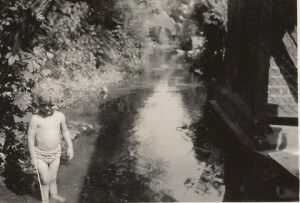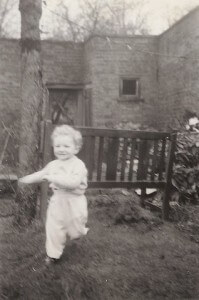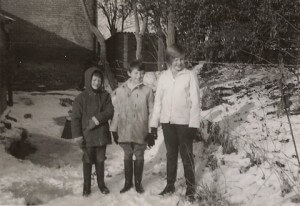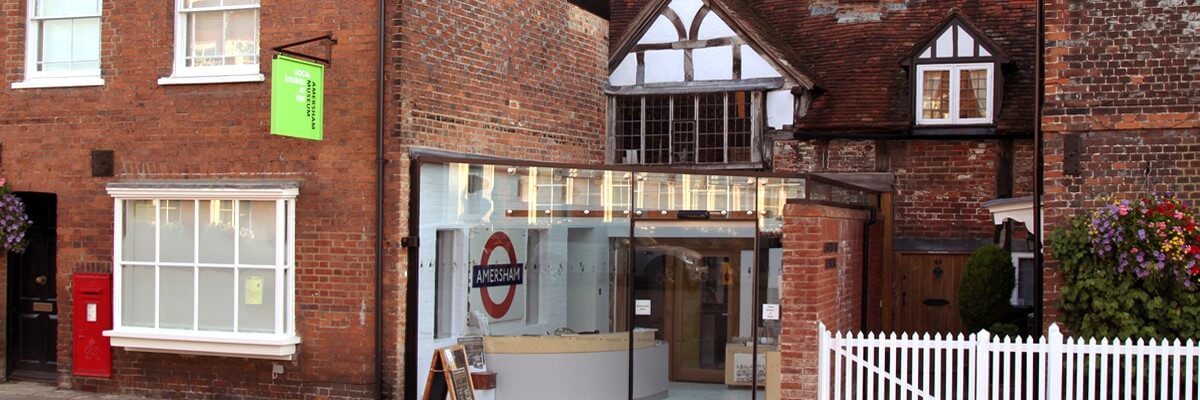This article was written in 2014 by Margot Hutcheson for the Amersham Society Newsletter and is reproduced with permission
Growing up beside the Misbourne River
A bourn denotes a small stream of water that runs sometimes and the Misbourne is certainly true to the description, some years there’s a dry river bed, dead fish and rusty cans, other years a very low water table devoid of oxygen.
In the winter of 2013/14 it surprised everyone by going rogue, it burst its banks to follow its own course, rampaging through houses, gardens and outhouses. It seemed like a war going on under my studio, where the river runs, with logs smashing into each other and bricks rolling along in the flood. It’s a dark space in the culvert, previously home to some sluggish crayfish and a few trout that never seemed to grow big enough to eat. My brother and I grew up beside this small stretch of the Misbourne; we were considered the fortunate kids because we had access to the stream to build dams, to slosh and float about on a li-lo on glorious summer days, to fish for muddy tasting trout on cloudy days.

It’s a clear chalk stream that you can watch for hours to see creatures moving about, fifty years ago there were large, grey water rats living in the bank beside where we played. There were leeches that we used to put in jam jars beside the house and watch as they made their way back to the river, one body stretch at a time. We caught minnows and newts, scooped up tadpoles in nets and watched them grow into frogs in jam jars.

There were many things alive in the water to interest a child fifty years ago but I don’t remember many birds along the river, not like today with Kingfishers and Herons constantly patrolling for a meal and pied wagtails doing their flirty dance on the banks. Of course by the time I was a child the river hadn’t been used as a toilet for some time and the polluted watercourse had recovered somewhat. In days before there were outdoor dunnies at the bottom of the gardens along the river bank emptying straight out into the water. The ruins of one of these facilities was still in the corner of our garden when we moved in in 1957. The stench must have been awful.

Our house has high walls around the garden and a wall at the end to shut out whatever happened to have been tipped into the river. With the water unfit to drink, everyone drank beer from the three breweries in town, they supplied the numerous pubs, coaching inns and the thirsty population with liquid that wouldn’t make them ill, I suppose that from childhood onwards everybody just got used to being drunk all the time.
The old stable over the river with its two stalls for coach horses and dark upstairs hay loft was damp and full of spiders; three hundred years’ generations of spiders. After so much time they think the building is theirs and I’m just a supplier of warmth and food. They certainly live in more comfort these days and there seem to be many more varieties of arachnids now, maybe hitch hikers from French camping trips. In some years huge populations of daddy long legs descend on me and get stuck on everything. My studio above the river is heated and clean and still home to wildlife. On hot days bees come and go from their underground home in the bamboo outside the door, frogs hop in and out to sit on the cool stone floor and in autumn squirrels roll nuts down the roof. These contacts with the life on the edge of the Misbourne are like a quiet motor to my work.
It amazes me still to open the door out to the river and see the huge trout the size of a small tuna, the white carp and the numerous and growing trout that live underneath me. To look out onto the Maltings very early in the morning and see a fox tip toeing through the wet grass; to very occasionally look eye to eye with a kingfisher in the small beech tree upstream; to hear the owls screech in the small hours: success? warning?
I went away when I was eighteen and saw many fine and pleasant rivers but the clear chalk streams of the Chilterns are unique, I still don’t trust water that isn’t crystal clear right to the bottom. In the 11th Century church in Little Missenden, a few miles upriver, amongst the old murals is a picture of a salmon. So before the river was tamed with walls and buildings the king of fish swam up to spawn. It’s a long, long way up the Thames Estuary and small tributaries to reach the Chilterns.

